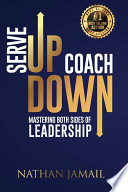

In 'Serve Up Coach Down', the author emphasizes the core principle of servant leadership, which prioritizes the needs of others. This approach encourages leaders to serve their teams, fostering a culture of trust and collaboration. By putting the team first, leaders can create an environment where employees feel valued and empowered. The book outlines how servant leadership can lead to improved team dynamics, higher morale, and increased productivity. It also discusses the importance of self-awareness and emotional intelligence in becoming an effective servant leader, as these traits help leaders understand the needs and motivations of their team members.
Continue readingThe book highlights coaching as a vital tool for personal and professional development. It distinguishes between traditional management and coaching, advocating for a coaching mindset that focuses on guiding rather than directing. By adopting a coaching approach, leaders can help their team members identify their strengths and areas for improvement, set goals, and develop action plans. This process not only enhances individual performance but also contributes to the overall success of the organization. The author provides practical strategies for effective coaching, including active listening, asking powerful questions, and providing constructive feedback.
Continue readingAccountability is a recurring theme in 'Serve Up Coach Down'. The author argues that for a team to thrive, a culture of accountability must be established. This involves setting clear expectations, providing the necessary resources, and holding individuals responsible for their actions. The book emphasizes that accountability should not be punitive but rather a means of fostering growth and improvement. Leaders are encouraged to model accountability themselves, demonstrating integrity and transparency in their decision-making processes. By cultivating an environment where team members feel responsible for their contributions, organizations can achieve higher levels of performance and engagement.
Continue readingDelegation is presented as a critical skill for leaders who aim to empower their teams. The author discusses the common pitfalls of micromanagement and the benefits of trusting team members with responsibilities. By effectively delegating tasks, leaders can not only reduce their own workload but also enable team members to develop new skills and take ownership of their work. The book outlines a framework for successful delegation, including identifying the right tasks to delegate, selecting the appropriate team members, and providing the necessary support and resources. This approach fosters a sense of autonomy and encourages innovation within the team.
Continue readingFeedback is portrayed as an essential component of growth and development in 'Serve Up Coach Down'. The author discusses the different types of feedback—positive, constructive, and developmental—and their respective roles in enhancing performance. The book emphasizes the need for a feedback-rich culture, where team members feel comfortable giving and receiving feedback. It provides strategies for delivering feedback effectively, such as being specific, timely, and focusing on behavior rather than personal attributes. By normalizing feedback within the team, leaders can facilitate continuous improvement and foster a growth mindset among their members.
Continue readingTrust is a foundational element of effective leadership and teamwork. The author explores the various ways leaders can build trust within their teams, including open communication, transparency, and consistency. The book highlights the importance of investing time in building relationships with team members, as strong interpersonal connections lead to better collaboration and problem-solving. It offers practical tips for leaders to strengthen these relationships, such as regular check-ins, team-building activities, and recognizing individual contributions. By prioritizing trust, leaders can create a safe environment where team members feel comfortable sharing ideas and taking risks.
Continue readingThe final key idea revolves around the alignment of team goals with the broader organizational vision. The author stresses that for teams to be truly effective, their objectives must align with the overall mission and values of the organization. This alignment ensures that everyone is working towards a common purpose, enhancing motivation and engagement. The book provides a framework for leaders to facilitate this alignment, including setting clear goals, communicating the organizational vision, and involving team members in the goal-setting process. By fostering a shared sense of purpose, leaders can drive higher levels of commitment and performance within their teams.
Continue reading